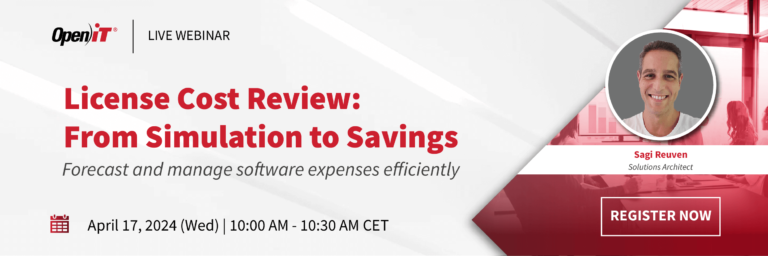IT cost optimization has become a catchphrase for IT managers, CFOs, and CIOs in recent years. It is driven by an interest in reducing IT costs without adversely affecting productivity. However, there are several misconceptions about how IT cost optimization really works and how it truly impacts business processes. Here we debunk 5 common myths about IT cost optimization.
“IT cost optimization means cost-cutting”
In the new digital marketplace, businesses are finding that IT assets have become essential to maintaining a competitive edge. According to Gartner, cost optimization is a continuous discipline to drive spending and cost reduction, while maximizing business value. In the past, cutting costs has been the go-to method for many companies that want to have tighter control over budget allocations. However, slashing the budget for IT resources may result in undesirable outcomes. Productivity may be impacted, causing missed deadlines, incomplete projects, and unexpected cost over-runs.
“IT cost optimization focuses on software applications alone”
IT assets are part of the technological commitment a company makes and optimizing them is more complex than just limiting software use. Users should be considered first before purchasing IT assets. The knowledgebase for use and management of these products can be challenging if not handled correctly. Businesses have software and hardware requirements from databases, applications, and licenses, to servers and data centers. Implementing an IT asset optimization plan without taking all these into consideration is a recipe for failure and could potentially incur unexpected expenditures or a risk of litigation.
“Hold budget allocations as a means of cost optimization”</h5>
Often a business will delay or prolong a project by withholding funds when budgets are tight. According to Gartner, a business should focus on costs that can be reduced or eliminated. Held budgets in the present are still a financial challenge for the future, and as such do not solve the problem. They only push it down the road.
“Optimizing IT costs won’t be necessary until after years of business operation”
The earlier you optimize, the better. If fees are optimized many years after the business begins operation, harder decisions will have to be made. For example, users will already be familiar with the current solution. Learning a new workflow will take time. New training materials will have to be generated. Timing the changeover will be crucial so it doesn’t interfere with internal and external business needs such as partner negotiations and internal development projects.
“IT cost optimization is a one-time deal”
Cost optimization cannot be solved overnight. It takes time to decide what to keep and what to let go. IT cost optimization should be a continuous process. Consider this step-by-step solution: meter, analyze, and optimize IT costs.
- Meter
Planning which products to consider for optimization should be first. Decide which products are frequently used and which are rarely used. Examine usage trends to understand how they are used to know which products and services to include in the optimization processes. - Analyze
The basis of the decision-making process will be the analysis of the metering reports. Be practical and resourceful in the decision-making process. Know which products to keep or which products to downgrade to maximize the outcome. - Optimize
After metering and analyzing, implementing the optimization is the last step. Apply all the necessary information, solutions, plans, process, and decisions to maximize IT cost efficiency
IT cost optimization doesn’t stop here. It is a cycle. The metering of IT assets should be applied again to evaluate which solutions were beneficial and which still need improvement. Effective IT cost optimization efforts often lead to an understanding of the true value of IT assets in businesses.
Contact us to discover how we can help you optimize your software assets with Open iT.4





